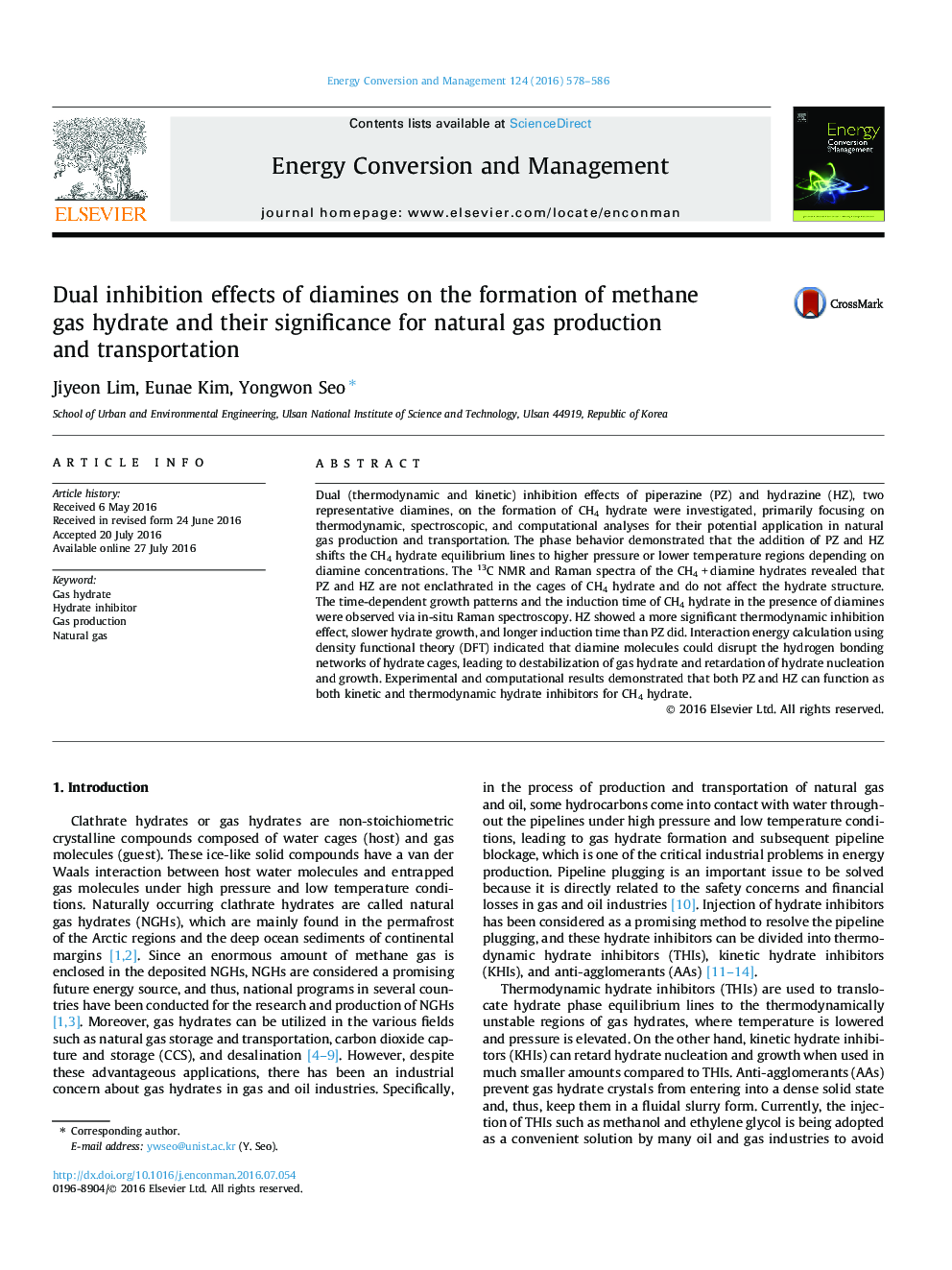| Article ID | Journal | Published Year | Pages | File Type |
|---|---|---|---|---|
| 765004 | Energy Conversion and Management | 2016 | 9 Pages |
•Dual functional diamine inhibitors for CH4 hydrate are newly suggested.•HZ demonstrated more significant thermodynamic and kinetic inhibition effects than PZ.•Both PZ and HZ inhibit CH4 hydrate formation without enclathration in sI gas hydrate.•The interaction energy between the host cage and inhibitor is related to inhibition effect.
Dual (thermodynamic and kinetic) inhibition effects of piperazine (PZ) and hydrazine (HZ), two representative diamines, on the formation of CH4 hydrate were investigated, primarily focusing on thermodynamic, spectroscopic, and computational analyses for their potential application in natural gas production and transportation. The phase behavior demonstrated that the addition of PZ and HZ shifts the CH4 hydrate equilibrium lines to higher pressure or lower temperature regions depending on diamine concentrations. The 13C NMR and Raman spectra of the CH4 + diamine hydrates revealed that PZ and HZ are not enclathrated in the cages of CH4 hydrate and do not affect the hydrate structure. The time-dependent growth patterns and the induction time of CH4 hydrate in the presence of diamines were observed via in-situ Raman spectroscopy. HZ showed a more significant thermodynamic inhibition effect, slower hydrate growth, and longer induction time than PZ did. Interaction energy calculation using density functional theory (DFT) indicated that diamine molecules could disrupt the hydrogen bonding networks of hydrate cages, leading to destabilization of gas hydrate and retardation of hydrate nucleation and growth. Experimental and computational results demonstrated that both PZ and HZ can function as both kinetic and thermodynamic hydrate inhibitors for CH4 hydrate.
